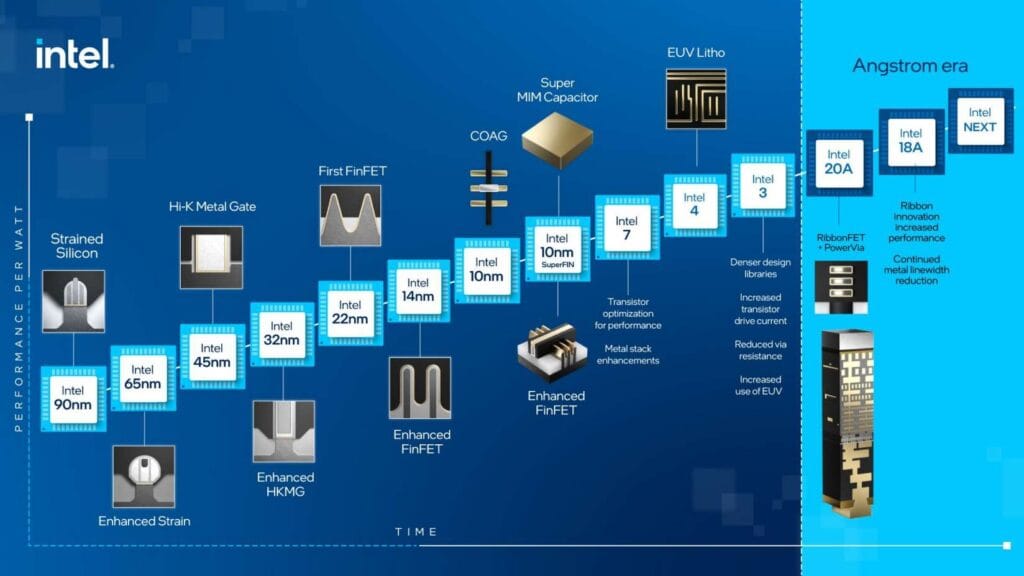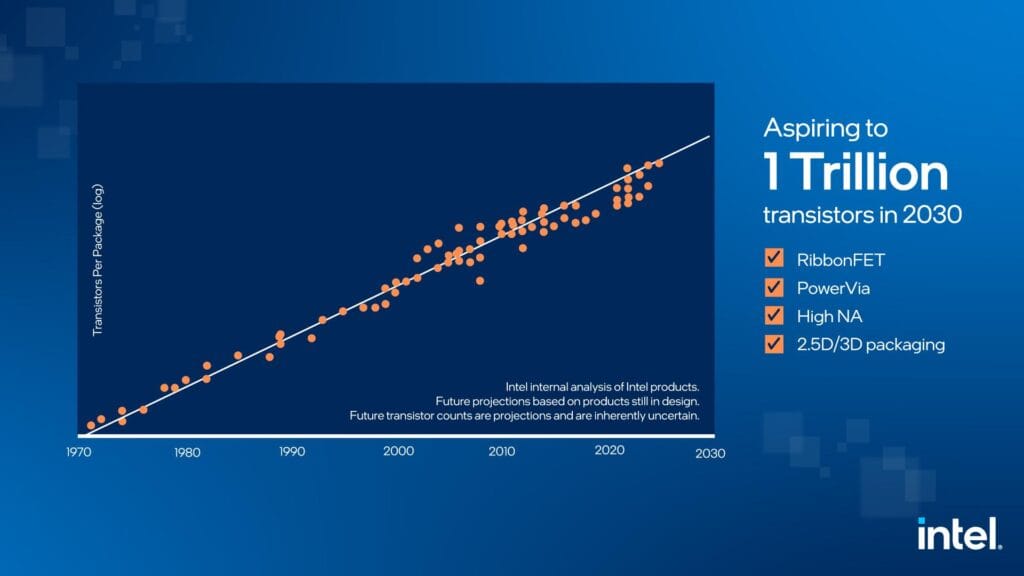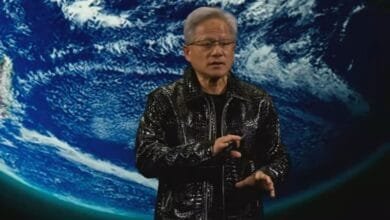Moore’s Law, an observation made by Intel co-founder Gordon Moore in 1965, has been a guiding force in the semiconductor industry and beyond. It’s not a law of physics but an empirical observation that has predicted the exponential growth of computing power over the past several decades.
The Spring of 1965

featuring Gordon Moore on April 19, 1965
In 1965, Gordon Moore, at the time serving as Fairchild Semiconductor’s R&D director, was approached by Electronics magazine to contribute an article forecasting developments within the semiconductor component industry over the subsequent decade. Responding to this invitation, Moore highlighted in the publication’s 35th-anniversary issue on April 19, 1965, that transistor and resistor elements on computer chips had been experiencing a doubling phenomenon almost annually a trend he envisioned continuing for at least the next ten years.
This prediction significantly outlasted its initial decade-long timeline. The notion eventually became widely recognized as “Moore’s Law” and emerged as arguably the most dependable and long-lasting gauge of technological advancement, impacting not only the semiconductor sector but the computing industry as a whole. Gordon Moore’s legacy endures as one of the most influential figures in technological history.
Understanding Moore’s Law
At its core, Moore’s Law posited that the number of transistors on a microchip would double approximately every two years, while the cost of computers would halve. This prediction has held true for more than half a century, driving the relentless pace of innovation and technological development.
Beyond the semiconductor industry, Moore’s Law has been the backbone of the digital revolution, enabling the creation of smaller, faster, and more efficient devices. From the smartphones in our pockets to the servers powering the internet, the influence of Moore’s Law is ubiquitous.
The dramatic decrease in the cost of computing has democratized technology, making it accessible to billions around the globe. It has fueled economic growth, created new industries, transformed existing ones, and reshaped how we work, communicate, and consume.

The Debate on Moore’s Law’s Viability
The status of Moore’s Law has been a contentious topic in recent years. Notably, Nvidia’s CEO, Jensen Huang, declared Moore’s Law dead on September 21, 2022, following the launch of the high-priced RTX 4090. Huang pointed to the end of the era where the number of transistors on a chip could double every couple of years without significant cost increases, a core tenet of Moore’s Law.
Despite such declarations, the sentiment isn’t unanimous across the tech industry. On September 27, 2022, upon the announcement of Intel‘s 2023 more affordable graphic cards series, and the launch of the Arc A770 GPU, Intel’s CEO Pat Gelsinger was of the opposite view and declares that Moore’s law is not dead in reference to the comment made by Nvidia CEO just one week earlier. Gelsinger even stood in front of a slide about its full production pipeline of various chips, stating, “Moore’s Law: Alive and Well.” He added, “We will continue to be the stewards of Moore’s law.”`
Challenges Ahead
As we approach the physical limits of transistor miniaturization, the original trajectory of Moore’s Law has begun to slow down.
Some experts argue that while the original pace of Moore’s Law may have slowed, innovation in computing isn’t solely dependent on transistor size. Advances in chip architecture, software, and alternative computing paradigms like quantum computing continue to drive progress in the field.
This nuanced view suggests that while the strictest interpretation of Moore’s Law regarding transistor count and cost may no longer hold, the spirit of rapid advancement in computing power continues to influence technological progress.
Moore’s Law Extended
In December 2022, on the 75th anniversary of the transistor, Intel announced that it had identified new materials and processes that blur the line between packaging and silicon and revealed critical next steps on the journey to extending Moore’s Law to 1 trillion transistors on a package. Intel’s material innovations also identified practical design choices that can meet the requirements of transistor scaling using a novel material just three atoms thick.

Moore’s Law: Fueling the AI Revolution
The relentless pace of improvement in computing power, as predicted by Moore’s Law, has been a cornerstone in the advancement of artificial intelligence. The exponential increase in the number of transistors on microchips has not only made computers faster but also more energy-efficient and cost-effective.
AI’s Exponential Growth: Outpacing Moore’s Law
AI has thrived on the back of Moore’s Law. The ability to process vast amounts of data at high speeds is crucial for machine learning algorithms to learn and make intelligent decisions. As hardware performance has improved, it has allowed AI systems to become more sophisticated, tackling complex tasks that were once thought to be the exclusive domain of human intelligence.
Interestingly, some studies, like Stanford University’s 2019 AI Index report, suggest that AI’s computational power is accelerating at a pace that outstrips Moore’s Law. The report indicates that the speed of AI computation doubles every three months, far exceeding the 18-month to two-year doubling period of processor speeds traditionally associated with Moore’s Law.
The Future of AI and Computing
Alternative technologies such as quantum computing and neuromorphic chips may take the baton from Moore’s Law, continuing the rapid advancement of AI. These technologies promise to overcome the physical limitations of current semiconductor materials, potentially leading to a new era of growth in AI capabilities.
Moore’s Law has been more than just a metric for technological progress; it has been a catalyst for innovation. As we look to the future, the spirit of Moore’s Law continues to inspire the pursuit of the next breakthrough that will redefine what is possible.






